When Neil Redfearn took charge of Sheffield United Women back in August 2020, the former Liverpool Women and Doncaster Rovers Belles Ladies coach stated that his aim for the club was to get them challenging at the top of the league and gunning for promotion to the WSL.
However, despite them playing some really attractive football over the last couple of years, they have never been able to realise that dream, and a fourth-placed finish in 2020/21 was followed by a seventh place in 2021/22 as the club fell away from where they wanted to be. This time around, they have really struggled, with them sitting third-bottom when Redfearn resigned as head coach in November and looking nervously over their shoulders at the prospect of exiting the Women’s Championship in the wrong direction.
Redfearn was eventually replaced in February by Jonathan Morgan, who had been in charge of National League North side Burnley Women for the first part of the season, but who has previous experience in the second tier as Leicester City Women’s title-winning manager back in 2020/21. Already, he has implemented several changes to the way that his new team play as they fight to avoid the drop, and this tactical analysis will look at those in more detail to show why his appointment may well have given them the spark that they have been searching for all season.
Attack
First, though, the analysis will look at why they are in such a perilous position, breaking down the errors that they have made on the field and the reasons that they have been so easy to play against, both with and without the ball, starting with their attacking play.
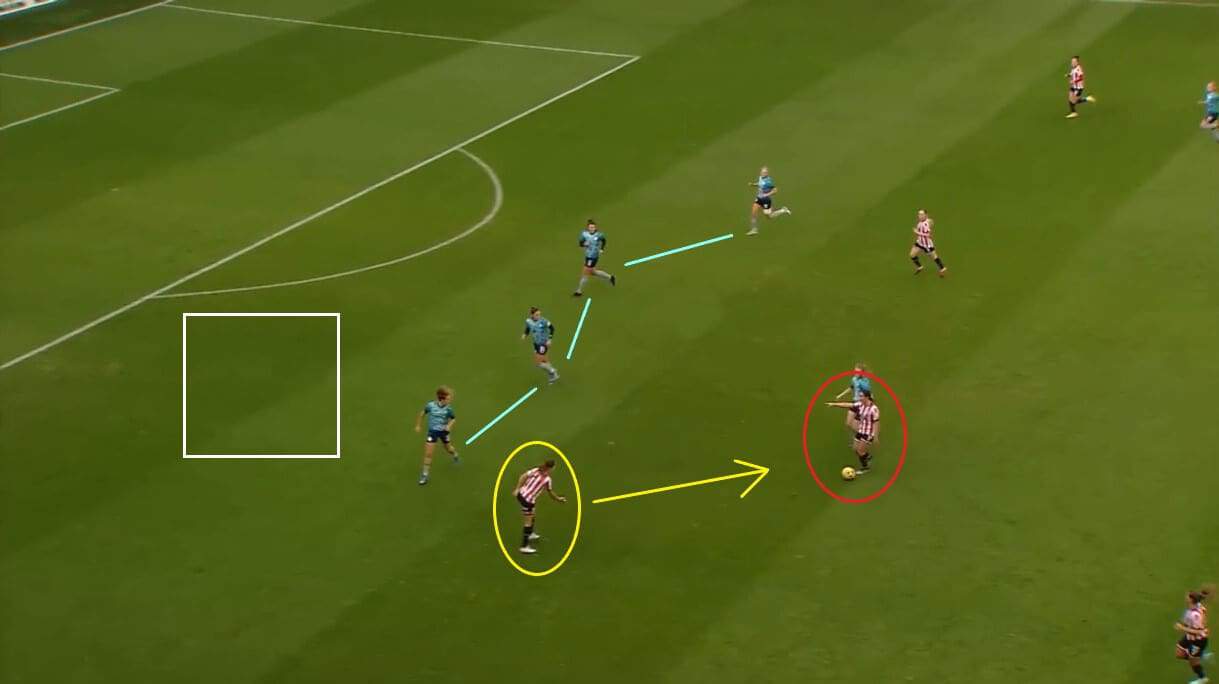
One of the most noticeable things this season with Sheffield United Women is that they have made themselves so easy to contain, even when they are counterattacking and look to have the advantage over their opponents.
In this case, they have made their way into London City Lionesses’ third of the field and are now looking to move the ball into the space behind London City’s defensive line before they have had a chance to close off all available avenues into it. Rhema Lord-Mears, in the red circle, has recognised the need for urgency and is pointing at the area for Courtney Sweetman-Kirk to run into, but the striker instead moves towards her teammate and removes the possibility of that early pass being made.
By doing so, Sheffield United allow their opponents to set up in the compact shape indicated here, giving them a better chance of ending the threat, but what makes it even worse for the attacking side is that Lord-Mears and Sweetman-Kirk get in each other’s way and the ball goes loose, handing influential midfielder Amy Rodgers the chance to regain it and clear her lines.
Therefore, a lot of what Sheffield United have been doing wrong has come down to mistakes like this which can be so easily avoided, and that is what will have frustrated those watching on the sidelines this season.

When looking at why their players’ instinct is to come towards the ball, one possible reason is that their overall build-up play has been incredibly slow. Here, they have the ball inside their own half and are looking to play out from the back, as was a key feature of Redfearn’s tactics, and Blackburn Rovers Ladies are set up in a way that limits their potential passing options.
However, despite Blackburn’s best efforts, there are still some options available, and Sheffield United simply need to play a precise pass into them in order to have a chance of transferring the ball into the final third. Instead, though, the pass here travels across the field, and, as was the case in the last situation, that plays directly into the opponents’ hands as it gives them added time to block off gaps that might have appeared and make it doubly hard for the ball to come forwards.
The result is that Sheffield United are unable to build any momentum and constantly look flat when in possession, and, whilst some might argue that a sideways pass helps them to keep the ball and not take any risks, the fact that Blackburn have the second-worst goal difference this season at the time of writing and have conceded 21 goals in 13 games shows that testing their resilience here might have led to a chance being created.
The fact that the game ended in a draw will perhaps be seen by Sheffield United as two points dropped because of this, especially as Blackburn are only one place and one point above them as things currently stand.

When they have got into the final third and looked capable of moving the ball into the middle, Sheffield United have been let down by their crosses, with so many of their performances seeing them deliver balls into the middle but fail to find their intended targets.
In this game against Durham Women, who have been another of the league’s strugglers for much of the campaign, they had so many opportunities to create a goal and looked dangerous every time that they got into these positions, but the final cross was always lacking and Durham found it easy to constantly clear balls from inside their goal area throughout the 90 minutes.
Therefore, when looking at why Sheffield United have only scored 19 goals in 16 games this season, it is clear to see that there have been issues in their general play that have limited them from showing what they are really capable of when on form.
Defence
Unfortunately for them, the problems have continued when it has come to their defensive play too, as they have again been guilty of making poor mistakes around the field and allowing opponents to break them down far too easily.
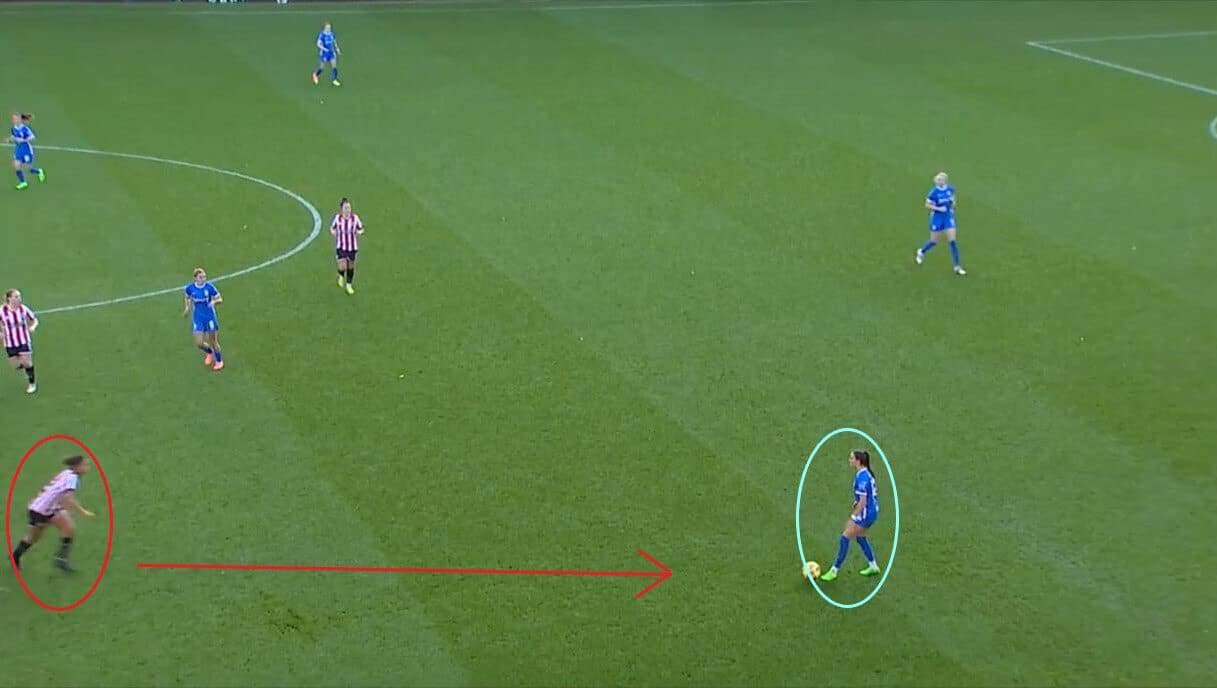
One thing that has been really noticeable when they don’t have the ball is a lack of clarity around what they need to do because it has been common to see some players pressing and others sitting back, as is the case here with Chenè Muir moving forwards and not being backed up by her teammates.
When talking about defensive tactics, any coach will say that, whatever the players are asked to do, they have to do it together, because not doing so will simply lead to gaps opening up and the team becoming easy to play through. This is something that Sheffield United have found out on too many occasions as the campaign has gone on, and the fact that only Muir went forward here meant that on-loan Manchester United Women defender Tara Bourne was able to move the ball towards Siobhan Wilson and instantly take the Sheffield United forward out of the game.
The next phase should see a player move to press Wilson, but none do, meaning that the Jamaica left-back has time to assess her options and pick her next pass, and the fact that the ball ends up at the feet of playmaker Jade Pennock only two passes later, who has been one of Birmingham City Women’s key goal threats this season, demonstrates how not having a coherent game plan out of possession has led to Sheffield United being the source of their own undoing at times.
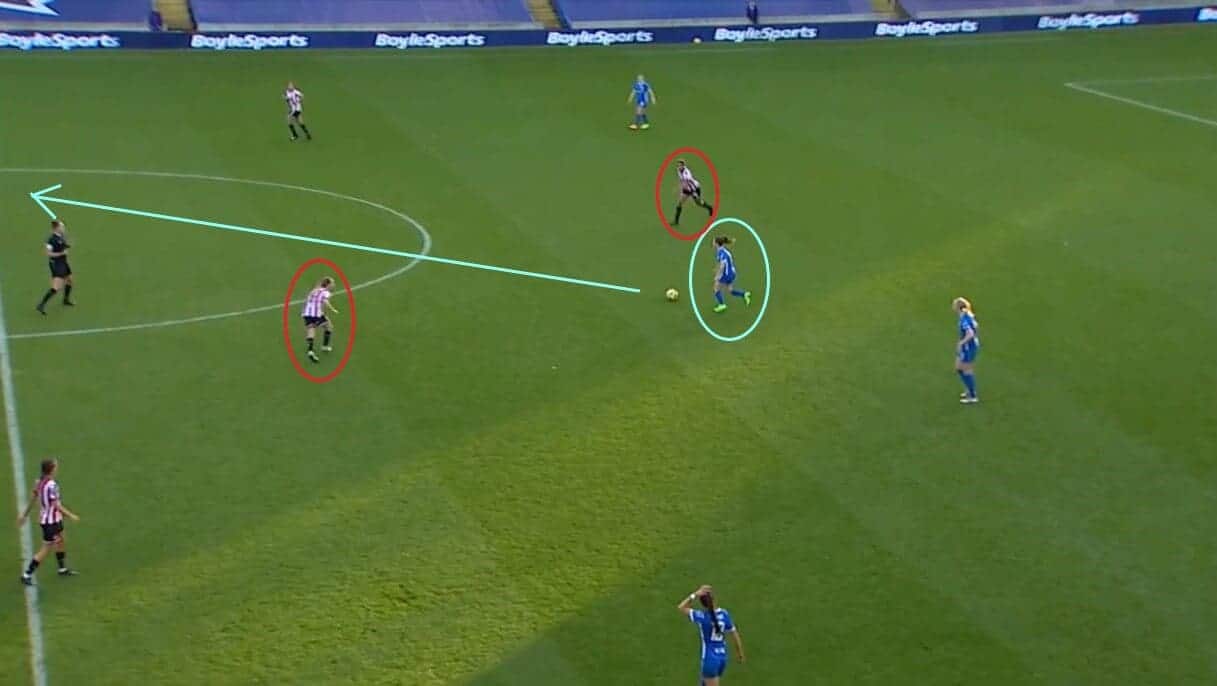
This situation is not much different, with Birmingham again looking to move the ball out from the back and once again finding Sheffield United hesitant and unsure of what they need to do. As a result, Scotland midfielder Christie Murray, who has been one of the best passers in the English women’s game in recent seasons, both in the WSL and in the Championship, has time to again find the right teammate and make a significant territorial gain, with Sheffield United duo Bex Rayner and Muir not closing her down until it is too late and subsequently allowing Murray to take four players out of the game with just one pass.
Therefore, whether it is tactical or just down to players making mistakes, this is something that has really hurt Sheffield United as the season has gone on and made them easy to break down, and it is not hard to see why they have only kept three clean sheets and remain firmly in the relegation mix when looking at situations like this.
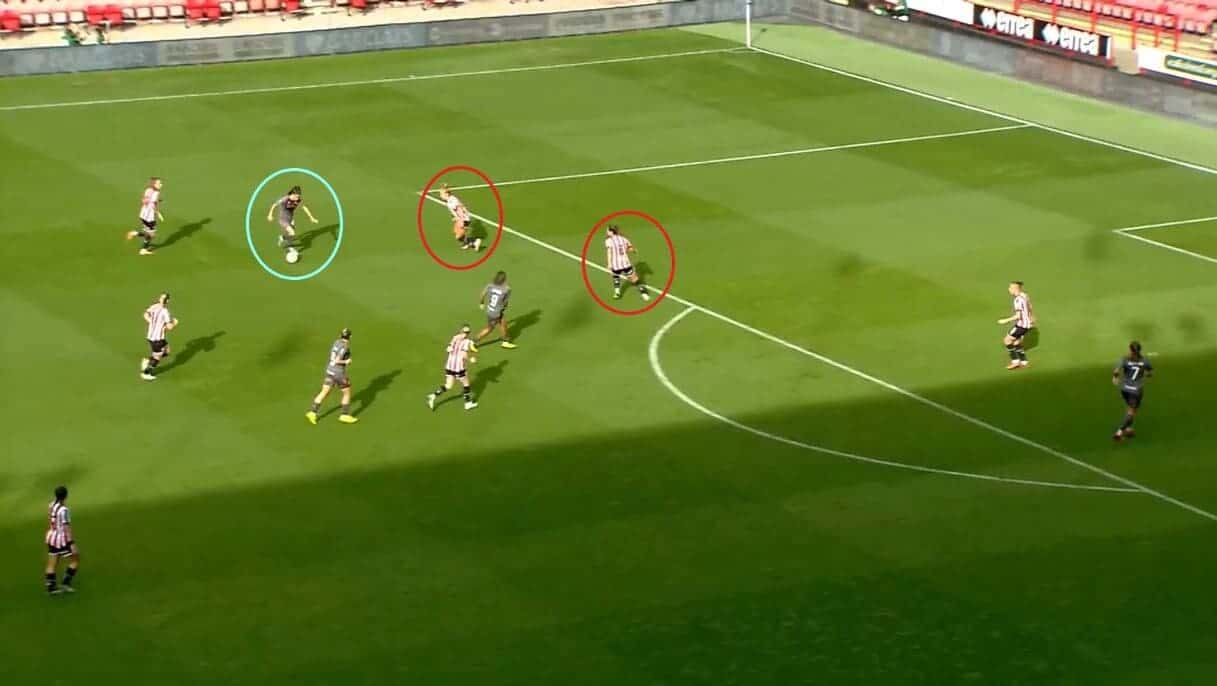
Another thing that has let them down is players not showing enough urgency in their own third, with them again giving their opponents too much time on the ball and practically inviting them to take the ball into areas where they can shoot at goal. On this occasion, it is current league leaders Bristol City Women who have made their way into the final third, with Wales international Ffion Morgan now looking to manoeuvre herself into space inside the pitch and get the ball onto her favoured foot.
The natural instinct from Sheffield United’s point of view should be to move forwards and both take time away from Morgan and narrow her angle, but Charlotte Newsham and Grace Riglar, in the red circles, decide to hold their ground and instead edge backwards. As a result, Morgan is able to take her time and pick her spot, with her effort going narrowly wide.
However, even though this chance didn’t lead to anything, it is not the only time that Sheffield United have made mistakes around their goal area, and it is moments like this that really show why they have conceded 19 goals so far and lost 10 of their 16 league matches.
Initial improvements
With all of that in mind, it is clear that Jonathan Morgan has a major job on his hands to reignite the team and drag them away from the relegation zone, with a need to get results quickly in order to build a sizeable gap between themselves and bottom side Coventry United Women (it currently stands at seven points).
The good news is that, from what has been seen in his first games in charge of the side, the players are responding to his methods and tactics, and there is no doubt that if they continue to make improvements in each game between now and the end of the season, they will have a good chance of retaining their place in the second tier.
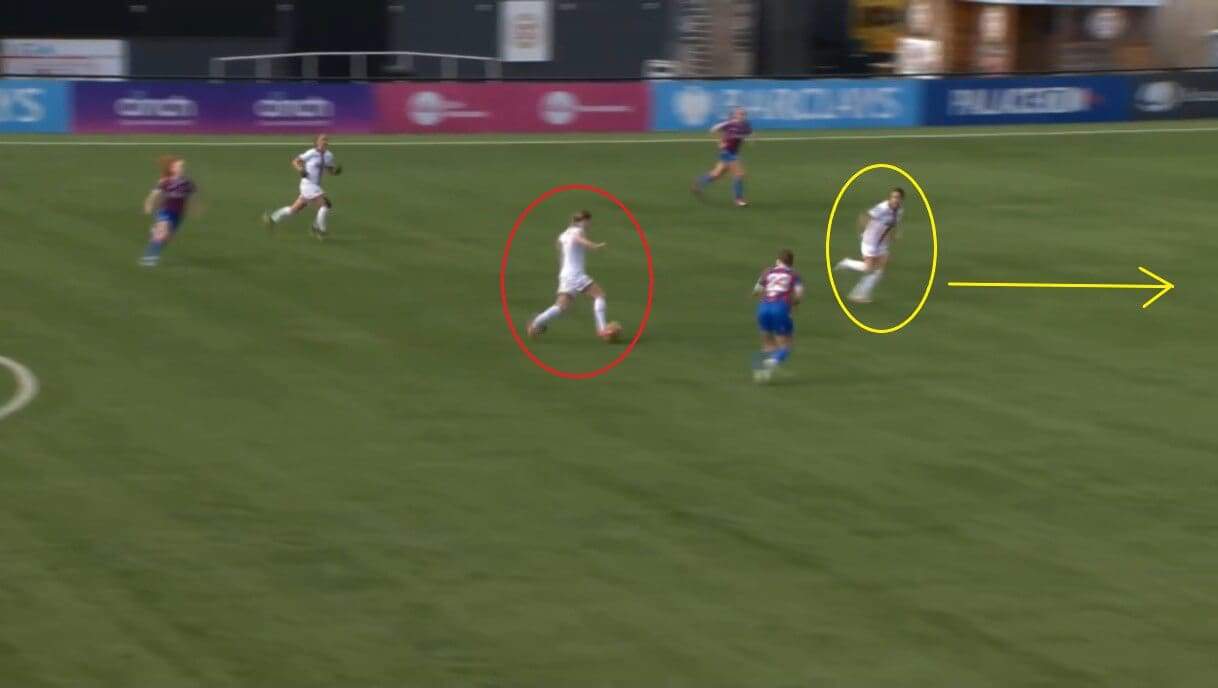
Morgan had clearly done his homework on Sheffield United Women and their performances before he arrived at the club because he understood what had been going wrong and what needed fixing, and they are definitely playing with more quality at both ends of the field with him in charge.
One of the things that he has introduced is specific roles for some of his players, which has really helped when it comes to adding clarity to their play that had been previously lacking. As a result, it is rare to see players moving into the same areas and making it difficult for them to create promising attacking opportunities, with the key focus now being on moving the ball up the field towards Sweetman-Kirk and unlocking her pace behind the opposing defensive lines.
The striker has been given a very simple task on the field under Morgan, with her now staying as high up the field as possible and providing a target for the rest of the team to find when they have the ball, and the fact that she is running ahead of it here indicates how that has given Sheffield United a significantly improved threat in the final third.
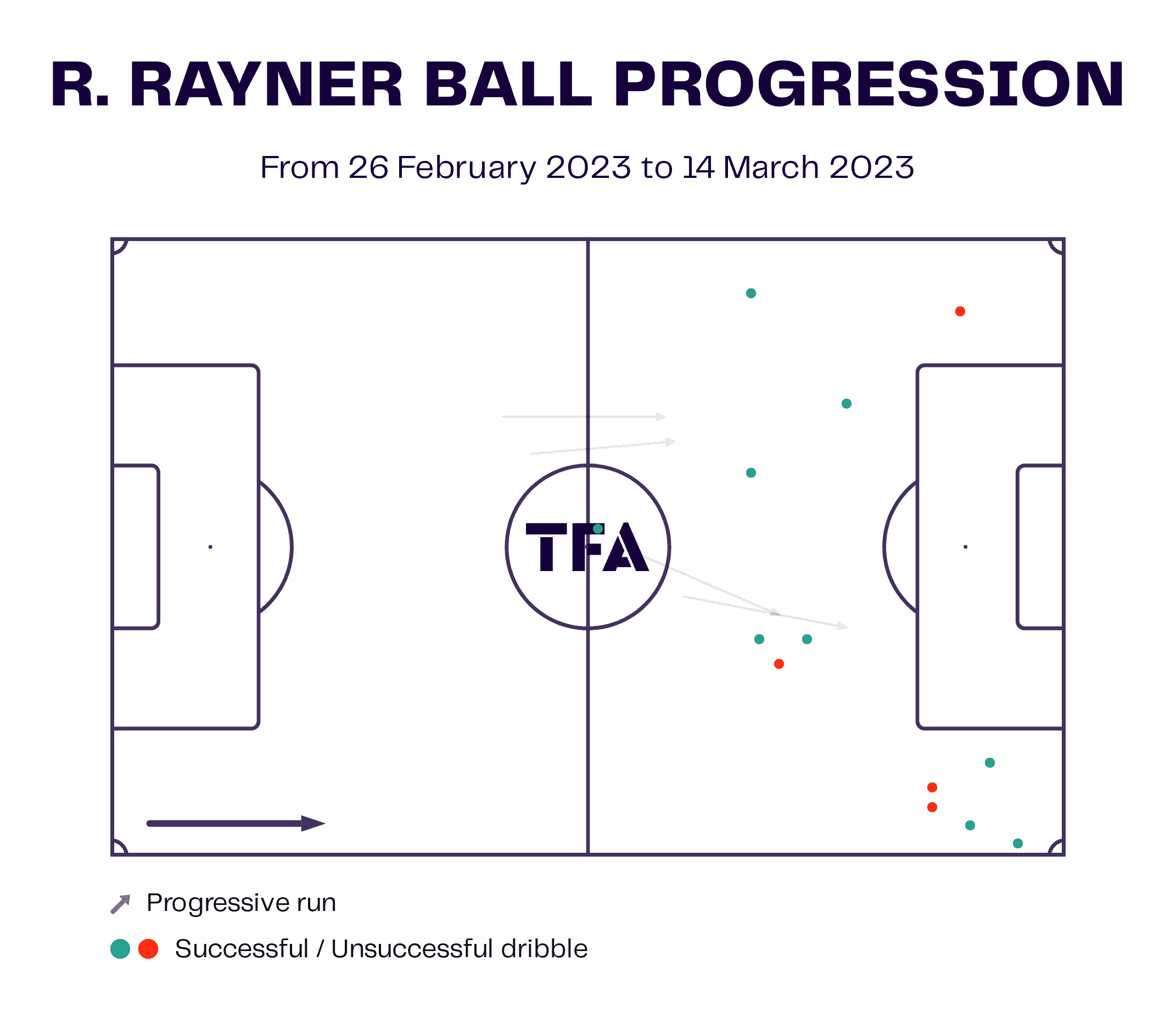
However, the player to really focus on is Rayner, in the red circle, because she has taken on a playmaker role for the team of late and has been asked by Morgan to focus on disrupting opponents’ build-up play and launching attacks from the opposing half of the field. As this graphic indicates, she has made a high number of progressive dribbles since Morgan has taken charge, and the fact that more of them have been successful than unsuccessful indicates that it is a role that suits her capabilities.
It is not dissimilar to the sort of thing that Lucy Watson did for them last season, in that she frequented these areas and looked to create goalscoring opportunities from them. However, once she left the club in the summer to join Chelsea Women, Sheffield United didn’t really replace that part of their game, and that is one big reason that they have struggled to pose the same level of threat during the current campaign.
Now, with Rayner in that role, it is likely that their performance levels may return to something close to what fans have become used to witnessing, and that might prove decisive in helping the team to stave off a drop to the third tier.
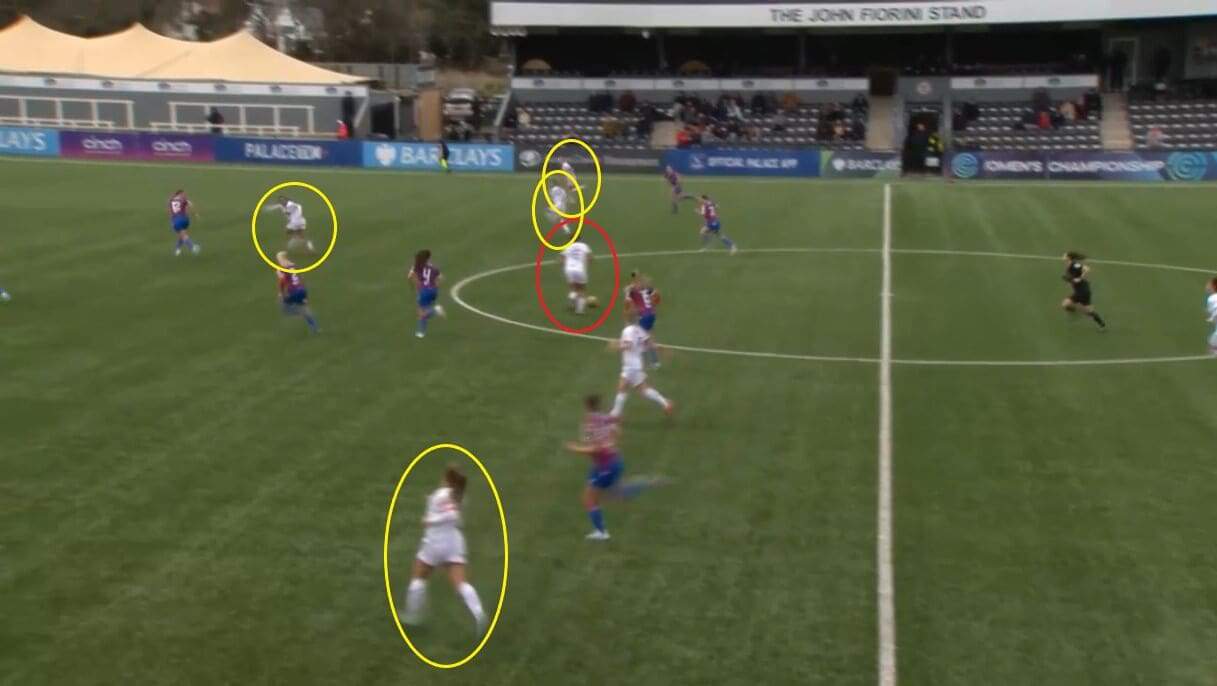
It is not only Sweetman-Kirk who has been asked to get up the field though because she has often been partnered by Wales forward Georgia Walters in attack, and the combination of both has ensured that Sheffield United have had a variety of options when looking to move the ball into advanced areas.
Getting numbers into the forward areas to create more passing options is something that Morgan has worked on a lot during his first games in charge, with four players running up the field and getting ahead of Muir, who has the ball. This would not have been the case under the old way of playing, with this scout report pointing out previously how their transitions were often laboured and never caused their opponents any significant headaches.
Therefore, again, it is clear not only that Morgan has been trying to improve their overall performances, but also that the players are buying into his ideas and tactics, and that is another reason that they can have hope of staying in the division and not falling through the trapdoor.
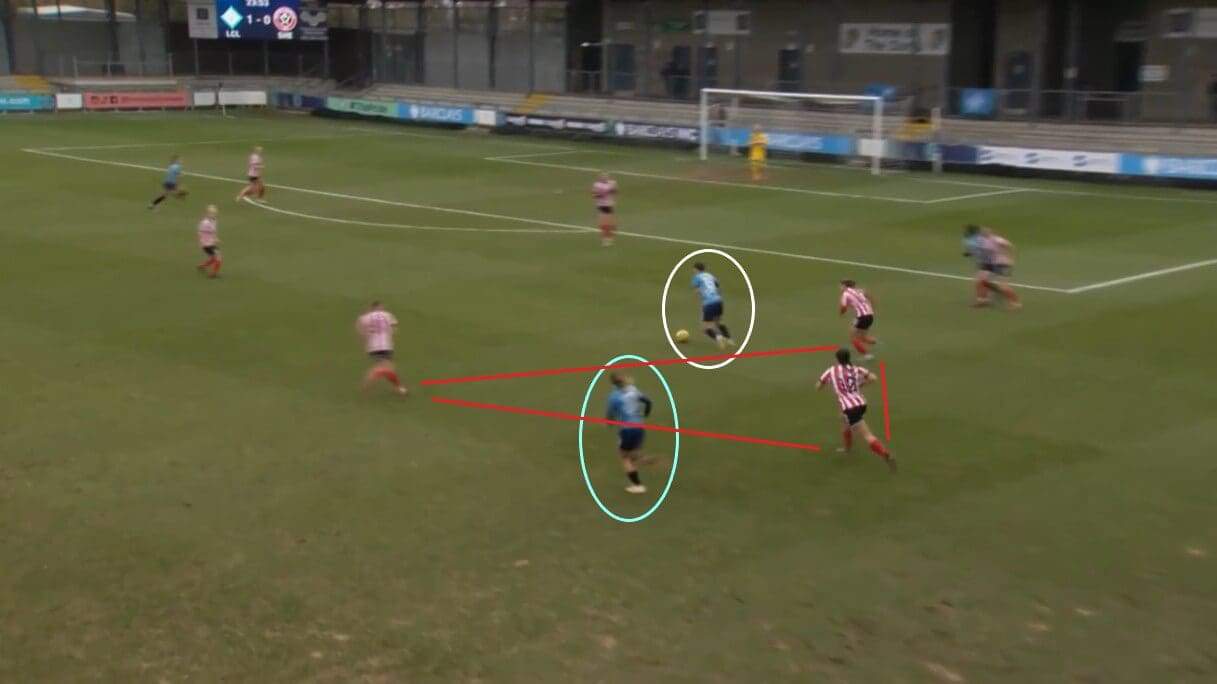
That newfound sense of urgency and desire has also been prominent in Sheffield United’s defensive play too, with it clear that there is now a greater understanding of what the game plan is and what each player needs to do at every stage of the game.
Here, London City are looking to create a goalscoring opportunity, with former West Ham United Women defender Lois Joel on the wing, and, as was the case previously, she has been closed down and forced to move the ball into in-form striker Sarah Ewens.
However, it is what happens next that has changed under Morgan, because the players behind no longer sit back and allow their opponents to move the ball around at their own leisure. Instead, Ewens finds herself instantly surrounded by the trio of Rayner, Alethea Paul and Lord-Mears and is forced to shoot at goal earlier than she would have wanted to, and the result is that her effort fails to trouble the Sheffield United goal.
Therefore, even though these are small adjustments, it is once again clear that Morgan has had an effect on his team since joining them, and there is a lot more positivity around the club as a result.
Conclusion
In conclusion, this tactical analysis has looked at Sheffield United Women and the differences between their play in the first half of the season and now, with Jonathan Morgan having taken over from Neil Redfearn as their new head coach and instantly working to change their style of play and lead the club to safety.
There is no doubt that they have been one of the more disappointing sides in the division during the current campaign, and their fans will testify to the fact that the magnitude of errors that they have committed both on and off the ball have cost them valuable points.
However, there is also no doubt that smiles are starting to appear in the Steel City again, with belief flowing back into the players that they can secure another season in the Championship and can then kick on next season. The club do seem to have appointed Morgan with the long-term future in mind, and the fact that he described the club as “a sleeping giant starting to wake up” in one of his first interviews shows that he has plans for the future of the team and wants to be the one to restore them to their former glories.
If they do manage to retain their place in the Championship, it would not be a surprise to see them enter next season’s promotion fight, with the players seemingly ready to follow him on a process of recovery, and there is definite optimism around the club that, with the former Leicester coach in charge, they might be able to realise their dream of playing in the promised lands of the WSL at last.





Comments